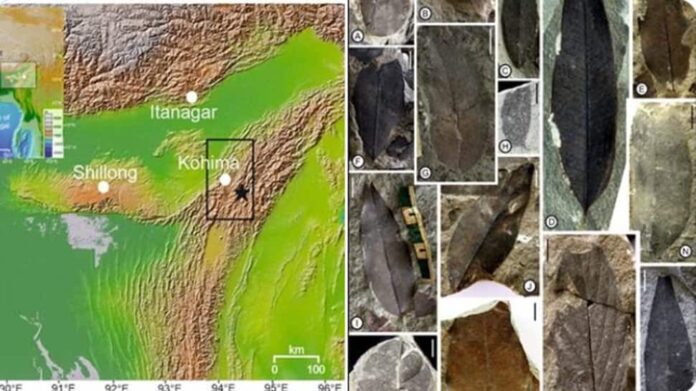NEW DELHI: A new study has established a connection between the formation of Antarctica around 34 million years ago and the early evolution of the Indian monsoon system that allowed lush forests to flourish across the subcontinent, Ministry of Science & Technology said. The discovery of well-preserved fossil leaves from the Laisong Formation in Nagaland, dating back about 34 million years, suggested that the region once had a warm and wet climate.
This led scientists from led by researchers from the Birbal Sahni Institute of Palaeosciences (Lucknow) and Wadia Institute of Himalayan Geology (Dehradun), both autonomous institutes of the Department of Science and Technology (DST) to carry out a detailed climate reconstruction and the results revealed something even more striking–very high rainfall and temperatures. The scientists started exploring what could have caused such extreme tropical conditions at that time.
Fossil leaves from Nagaland reveal how Antarctica shaped the Indian Monsoons
A new study has established a connection between the formation of Antarctica around 34 million years ago and the early evolution of the Indian monsoon system that allowed lush forests to flourish across… pic.twitter.com/Mp26osp2Lq
— PIB India (@PIB_India) September 9, 2025
Add Zee News as a Preferred Source
They found the clue lay in the fossil’s age, which matched the period when massive ice sheets first began forming in Antarctica. This timing pointed to a global connection–suggesting that the growth of Antarctic ice may have shifted wind and rainfall patterns, bringing intense monsoonal rains to Northeast India.
Their research, published in Palaeogeography, Palaeoclimatology, Palaeoecology, revealed that the growth of Antarctic ice reshaped global wind and rainfall patterns by shifting the Intertropical Convergence Zone (ITCZ)–a major rain belt–from the South Pole toward the tropics. As a result, India experienced exceptionally higher rainfall and warmer temperatures and the resultant evolution of the India monsoon system.
To uncover this story, scientists turned to an unusual witness: fossilized leaves found in the hills of Nagaland. Using a method called CLAMP (Climate Leaf Analysis Multivariate Program), researchers reconstructed past climates by studying the size, shape, and structure of these ancient leaves. Their findings showed that Nagaland once experienced much wetter and warmer conditions than today. Strikingly, these results matched the global timing of Antarctic glaciation–linking ice growth at the South Pole with tropical rainfall in India.
This discovery is more than just a tale of Earth’s deep past. It carries a warning for our future. As modern climate change accelerates Antarctic ice melt, the ITCZ may shift again, disrupting rainfall across the tropics. For India and its neighbors, this could mean profound changes in the monsoon–the lifeline for agriculture, water supply, and millions of people’s daily lives.
The study highlights that Earth’s climate is a global web. What happens in one corner of the world–be it the icy deserts of Antarctica or the humid forests of Nagaland–can reverberate across continents. By learning how our planet responded to dramatic shifts millions of years ago, we can better prepare for the challenges looming in a warming future.
